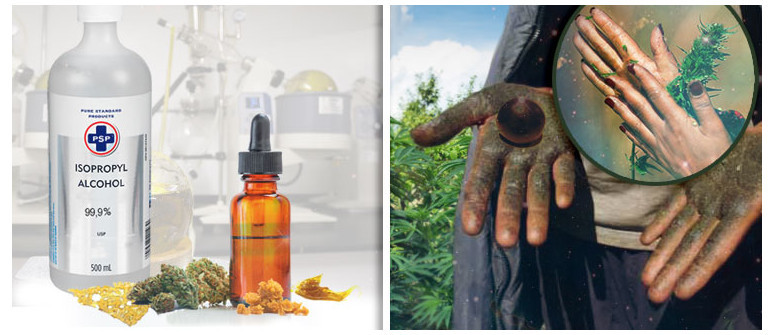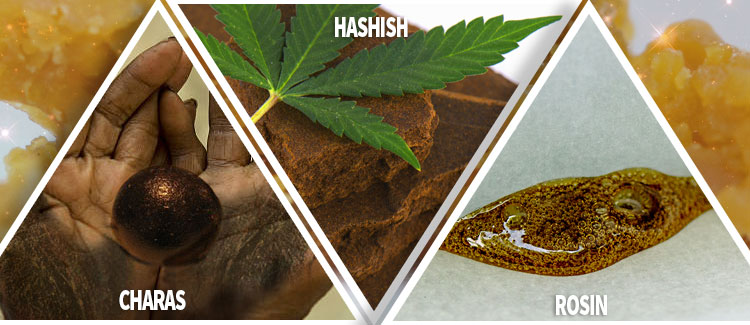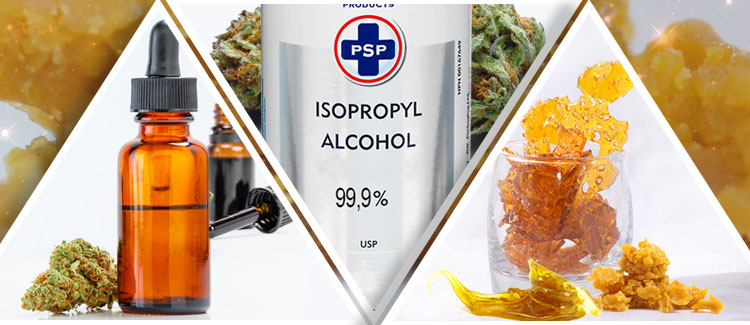Cannabis concentrates: what's the difference between solvent and solventless extracts?

If you’ve started exploring the wide world of cannabis concentrates, chances are you’ve come across the term “solvent” and “solventless.” To help you better understand the difference between the two, here’s an overview of cannabis concentrates, what they are, and how they are made.
Dabbing is becoming increasingly popular. If you’ve started exploring the wide world of cannabis concentrates, chances are you’ve come across the term “solvent” and “solventless.” To help you better understand the difference between the two, here’s an overview of cannabis concentrates, what they are, and how they are made.
Cannabis extracts, as the name suggests, are made by concentrating the essential compounds from cannabis plant material into a potent final product that can be smoked, vaporized, or used to make edibles. Understanding the basic theory behind creating cannabis extracts makes it easier to understand why some concentrates are made using solvents and others are not.
There are many different types of cannabis extract out there, sold under various names such as hash, BHO, budder, wax, shatter, and others. These terms tend to be more indicative of a concentrate’s consistency than anything else. And while the process of making concentrates can vary, they all involve one basic concept: separating trichomes from cannabis plant material. These trichomes, as you may know, contain the cannabinoids and terpenes that give cannabis its various effects.
WHAT IS THE DIFFERENCE BETWEEN SOLVENT AND SOLVENTLESS EXTRACTS?
The difference between solvent and solventless cannabis extracts is simple. Solvent concentrates are made using some kind of solvent (such as butane or alcohol) to separate trichomes from the cannabis plant. Solventless extracts, of course, are made without solvents.
POPULAR TYPES OF SOLVENTLESS EXTRACTS

HASH AND CHARAS
Some of the oldest types of cannabis extract are hash and charas. The most early mentions of the usage of hash come from areas in or near the Middle East. Charas, on the other hand, is the name used to describe handmade hash from India and Nepal. Both hash and charas are solventless extracts, but still involve separating trichomes from the cannabis plant.
Hash is often made via a process known as dry-sieving. This involves running dried cannabis buds over sieves to create kief, a fine powder rich in trichomes. This powder is then heated and pressed into blocks that can be brown, black, or even reddish in color.
Charas, on the other hand, is made by rolling live cannabis buds between the palms of the hand for some time. This leads to a buildup of dark resin, which can be rolled into balls or sticks, then smoked.
ROSIN
Another popular type of solventless extract is rosin. Rosin is made by pressing cannabis buds (dried for regular rosin and fresh for “live” rosin) in a hot press.
The heat and pressure from the press results in a sticky, golden oil from the buds—similar to tree sap. This oil is made up of the essential oils present in the plant’s trichomes. Live rosin is treasured for its rich aroma and flavor.
POPULAR SOLVENT CONCENTRATES
ICE WATER HASH
Ice water hash, sometimes also called bubble hash, is a simple way to make hash using, you guessed it, only ice and water as a solvent. Some people consider this a solventless concentrate, but since it does use water to separate the trichomes, we consider it a solvent extract instead.
Cannabis buds are first frozen to help make the trichomes slightly more brittle, then loaded into “bubble bags” (vinyl bags with different fine mesh sieves, designed to fit into 1 or 5-gallon buckets). Ice and water are then added to the bags and agitated to help separate the trichomes, which are filtered through the different sieves of each bag. Each bag produces a different grade of hash, with the finest sieve producing the purest concentrate.
BHO (BUTANE HASH OIL)
Butane hash oil is extremely popular. As the name suggests, it is made using liquid butane as a solvent. Again, it’s popular to use frozen cannabis to make BHO, which is then soaked in butane. The resulting mixture is then purged using heat, which helps evaporate the butane to create a golden hash oil.
Note: Many people make BHO at home. Doing so, however, can be dangerous because butane is extremely flammable. When not purged in a safe, controlled environment, the BHO fumes can ignite and cause an explosion. If you happen to make your own BHO, make sure you always do so in a well-ventilated place and stay away from any open flames. Also, whenever making your own extracts, only ever work with high-grade solvents like butane, ethanol, or isopropyl alcohol.
BHO is known by a variety of different names, such as shatter, budder, wax, and crumble. These terms mainly describe the consistency of the final product, which can vary depending on how it was purged. BHO that is whipped or agitated during the purging process, for example, tends to be more creamy or crumbly in texture and therefore sold as budder, wax, or crumble. Shatter, on the other hand, is very brittle and made with as little agitation as possible.
Not to be confused with rosin, live resin is another type of BHO; but unlike regular BHO, it is made with live, snap-frozen cannabis buds. Working with live buds helps preserve many of the flavors and aromas of the cannabis plant, and produces a highly sought-after product.
PHO (PROPANE HASH OIL)
Far less popular than BHO, PHO is made using liquid propane instead of butane. Propane extracts slightly different ratios of cannabinoids and also has a lower boiling point. This means it can be purged at lower temperatures, which helps to protect the terpenes in cannabis and produces a more aromatic, full-spectrum hash product. Like BHO, PHO can come in many different textures.
TERP SAUCE
Terp sauce, sometimes also called HTFSE (high terpene full spectrum extract), is a type of extract made to be rich in terpenes. These oils are often created using a solvent like butane or propane, but are purged in a long, slow process.
This involves much lower temperatures and is usually done in a vacuum to ensure a full purging without any damage to the volatile terpenes and cannabinoids in the oil. Over time, the slow extraction causes parts of the oil to crystallize, creating a thick, sugary final product with a texture similar to crystallized honey.
QUICK WASH ETHANOL/ISOPROPYL EXTRACTS
Sometimes known as QWISO or QWETO, these concentrates are made using alcohol as a solvent, instead of butane. Quick wash is made by pouring alcohol over cannabis buds (usually frozen) to separate and extract trichomes. This is done quickly, so as to avoid extracting chlorophyll from the plant (hence the name quick wash).
Like BHO, the resulting liquid is then purged slowly to produce an oil very similar to shatter. If the cannabis is soaked in alcohol for too long, the final product will be darker and more wax-like.
CO2 OIL
CO2 oil, as the name suggests, is made using CO2 as a solvent. It is often a highly-priced oil just because extracting cannabis with CO2 requires very specialized equipment.
The process of making CO2 is similar to that of BHO. Frozen cannabis is usually loaded into a chamber, which is then pumped full of subcritical CO2 (CO2 at such a low temperature that it becomes liquid). The oil is kept at this low temperature all throughout the process, which helps preserve cannabinoids and terpenes. Once it is purged, CO2 oil is typically of a golden color and treasured for its rich flavor and potency.
Some CO2 oils, however, can also lack terpenes when exposed to higher temperatures. This is the case with supercritical CO2 extraction, in which higher temperature and pressure values are used to extract compounds. And while this process damages more terpenes than subcritical extraction, supercritical takes less time and can extract larger molecules, such as omega-3 and omega-6 fatty acids.
WHICH IS BETTER: SOLVENT OR SOLVENTLESS CANNABIS EXTRACTS?
Whether you choose to dab or otherwise ingest solvent or solventless cannabis extracts is completely up to you. If you like to stick to pure cannabis products, you may prefer solventless extracts.
However, high-quality solvent dabs that have been properly purged offer a very unique experience that many cannabis enthusiasts love. Choosing one over the other will mainly come down to your own personal preferences and the availability of different extracts in your area.




